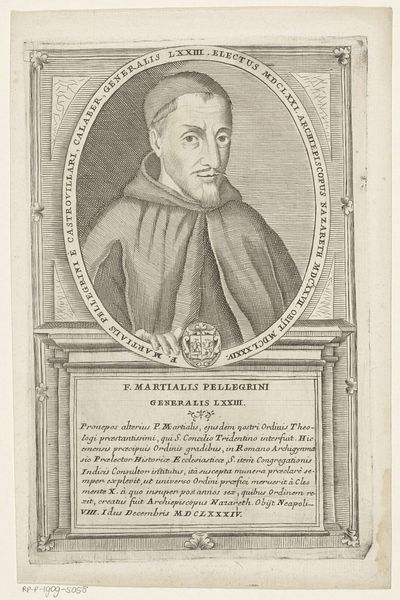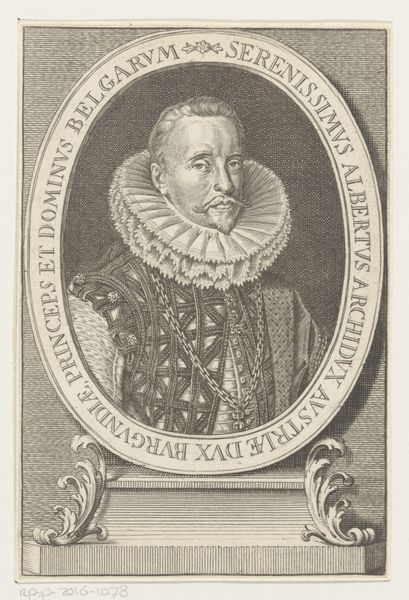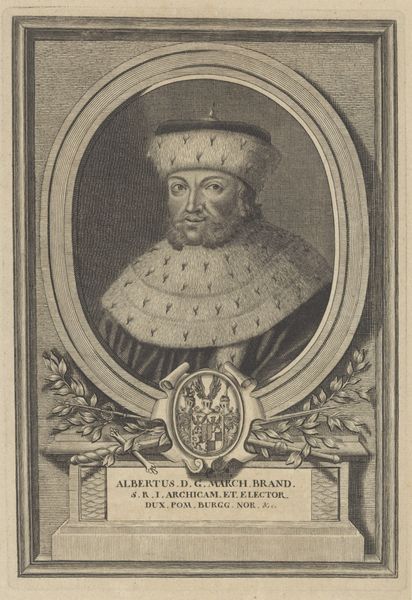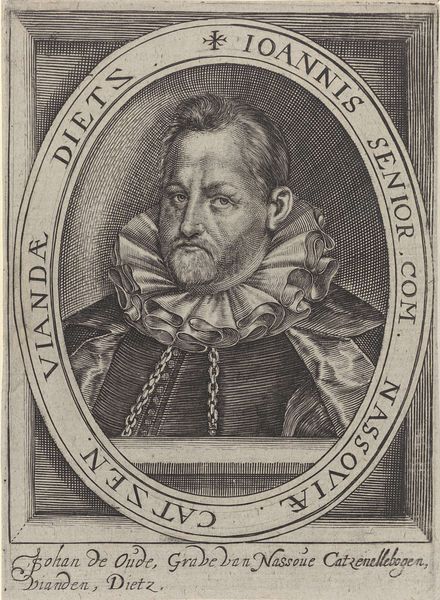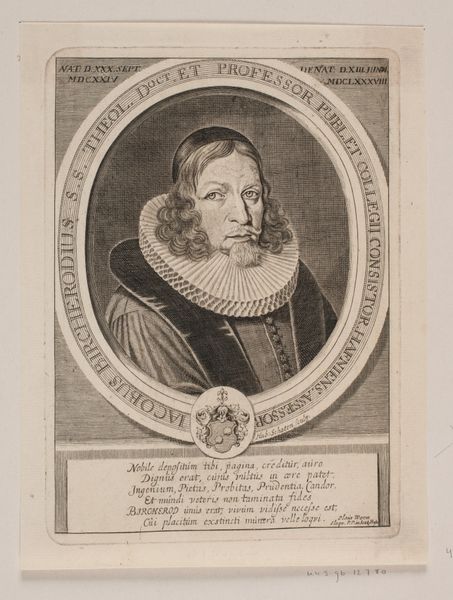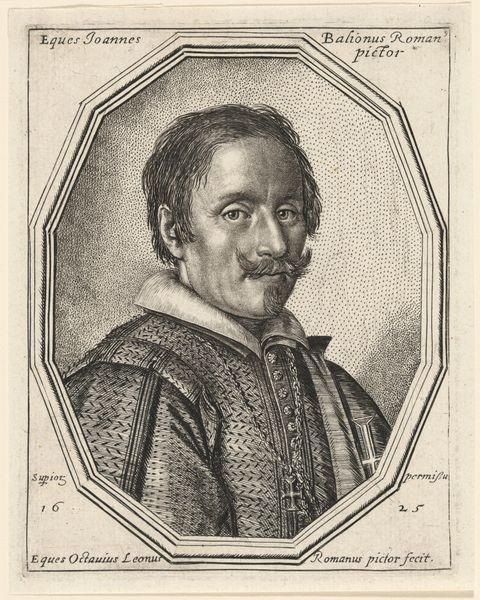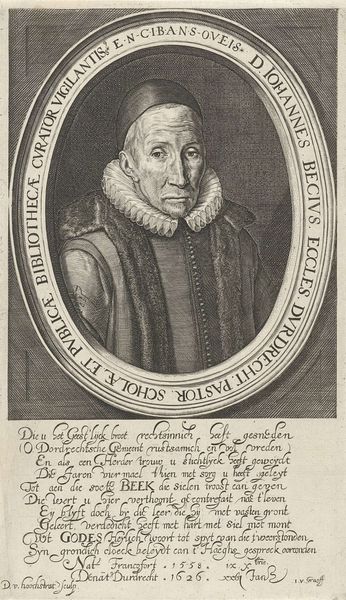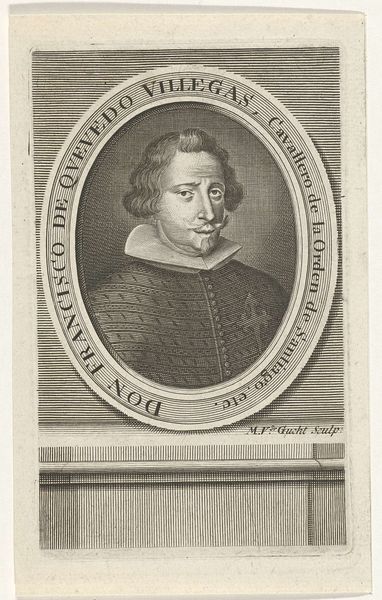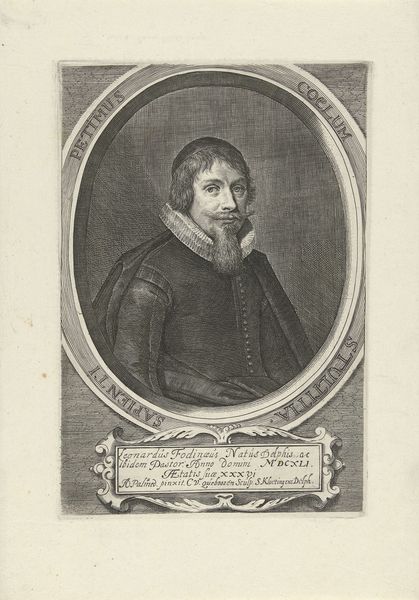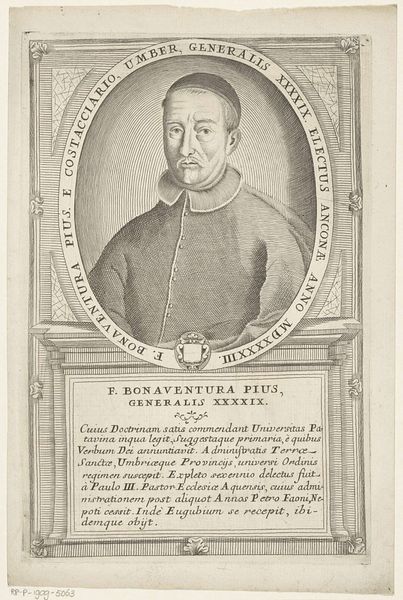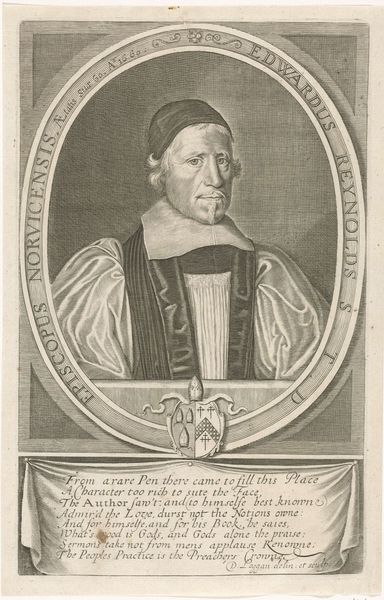
print, intaglio, paper, engraving
#
portrait
#
baroque
#
dutch-golden-age
# print
#
intaglio
#
old engraving style
#
paper
#
engraving
Dimensions: height 180 mm, width 125 mm
Copyright: Rijks Museum: Open Domain
Curator: Look at this engraving, "Portret van Samuel de Swaef," created in 1627 by Joannes Sarragon after a design by G. Beckx. The intaglio print is executed on paper. It has a distinctly melancholic atmosphere, doesn't it? Editor: Yes, that grey tonality really establishes a mood. What I'm particularly interested in is how the printmaking process itself—the lines etched and bitten into the metal plate, the application of ink, the pressure of the press—all contribute to this somewhat austere effect. Curator: Precisely. The portrait presents us with Samuel de Swaef, enclosed within an oval frame, itself decorated with text. His attire signals status, yet the sitter's gaze suggests something more introspective. The societal forces and the traditions of portraiture are at play, aiming to project both likeness and the sitter's social position. Editor: Absolutely, but how readily accessible were prints such as this? Consider the circulation of images within 17th-century Dutch society, how the act of multiplying images through printmaking impacts viewership, and contributes to a burgeoning culture of public imagery and perhaps celebrity... to a degree. Curator: They certainly had a public function. Prints served as important visual records, disseminating likenesses of prominent figures like de Swaef beyond the elite circles. The text surrounding him, presumably laudatory, underscores the intention to create and maintain a specific public image. Editor: We must also consider the material realities of artistic production at the time. Printmaking necessitated collaboration—artists who design, engravers who translate designs into metal plates. There is a whole workshop infrastructure, as well as access to specialised materials and technologies. Curator: True. Furthermore, the survival of such an artifact points to other systems. Who collected these prints? How were they preserved, and displayed, shaping their meaning over centuries? The journey of this print through time and the various hands it passed through would provide another layer of history. Editor: Yes, its durability as a reproducible medium ensured the subject's visibility through many hands. It’s all tied to social class, economic considerations, access to workshops. A really fascinating intersection of technology, social status, and enduring materiality. Curator: Exactly, and that the convergence shapes its status today.
Comments
No comments
Be the first to comment and join the conversation on the ultimate creative platform.
